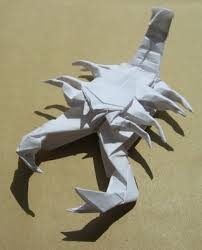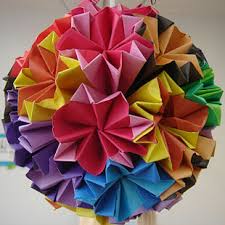The Japan Journal For JICA Training Ex- Participants : ORIGAMI
In January 2008 I got a chance joining Counterpart Training Program supported by JICA (Japan International Cooperation Agency) for two weeks with other five officials related to Education program of REDIP(Regional Education Development and Improvement Program), they were from Semarang, Bitung, Bekasi, Tangerang and Serang. We had chances to visit some schools to know and learn the management they had.
As the JICA Training Ex- Participants we have been being sent "The Japan Journal" monthly since January 2009 up to now. There are many information and progress that Japan has, especially in economic, science, technology, culture, environment and political news- described there. I am lucky to get it free.
There is an interesting article about points of tradition that remind me when we visited an elementary school in Tokyo we were given by some students long necklace made by origami. Ya ..we took home as merchandise. The title of the article is " Into the Fold - Practiced today around the world, the age-old art of origami holds a special place in the culture of Japan. "(explained by David Capel).





Origami is one charming product of the country's traditional culture which is pretty well known to all beyond Japan's shores-the delightful art of creating shapes of folded paper.
A remarkable feature with origami is the breadth of its appeal. Origami can absorb the attention of a six-year-old in tongue-protruding concentration as he or she attempts to fashion a frog or parrot out of a recalcitrant square of paper. Origami can absorb the attention of the mathematician as he or she attempts to apply theorems from differential geometry in developing methods for analyzing curved paper-folded shape.
Paper being the perishable stuff it is , the origins of origami are obscure. Originally a Chinese technology, paper-making was introduced to Japan from Korea in around the sixth century. But just when Chinese, Koreans or Japanese began folding paper is simply not known. Paper in ancient times was an expensive commodity, and the Japanese came to use folded paper on formal occasions and for ceremonial purposes. such applications are still evident in noshi, a folded-paper decoration often attached to gifts, and gohei, strips of paper cut and folded into zigzags, most frequently seen attached to shimenawa ropes in the Shinto religion to mark off sacred areas. Only later did the recreational use of origami develop. In 1797, sembazuru orikaba (How to fold 1,000 cranes) appeared and was the first book in Japanese dealing with paper folding as a pastime. Later, the educational use of origami became recognized in Japan, as in other countries, and its popular practice expanded enormously. Today paper figures of astonishing complexity can be achieved through a combination of traditional origami methods with sophisticated mathematical techniques.
Ya.... I think it is very interesting, and it developed into many kinds of shapes. Many kindergartens and elementary teachers need to have this skill to give our students skills to develop their motor movement of their fingers and also able to develop their creativity. And this skill seems forgotten by our teachers. Maybe for KKG committee this article can be a choice of training that will be planned......
A remarkable feature with origami is the breadth of its appeal. Origami can absorb the attention of a six-year-old in tongue-protruding concentration as he or she attempts to fashion a frog or parrot out of a recalcitrant square of paper. Origami can absorb the attention of the mathematician as he or she attempts to apply theorems from differential geometry in developing methods for analyzing curved paper-folded shape.
Paper being the perishable stuff it is , the origins of origami are obscure. Originally a Chinese technology, paper-making was introduced to Japan from Korea in around the sixth century. But just when Chinese, Koreans or Japanese began folding paper is simply not known. Paper in ancient times was an expensive commodity, and the Japanese came to use folded paper on formal occasions and for ceremonial purposes. such applications are still evident in noshi, a folded-paper decoration often attached to gifts, and gohei, strips of paper cut and folded into zigzags, most frequently seen attached to shimenawa ropes in the Shinto religion to mark off sacred areas. Only later did the recreational use of origami develop. In 1797, sembazuru orikaba (How to fold 1,000 cranes) appeared and was the first book in Japanese dealing with paper folding as a pastime. Later, the educational use of origami became recognized in Japan, as in other countries, and its popular practice expanded enormously. Today paper figures of astonishing complexity can be achieved through a combination of traditional origami methods with sophisticated mathematical techniques.
Ya.... I think it is very interesting, and it developed into many kinds of shapes. Many kindergartens and elementary teachers need to have this skill to give our students skills to develop their motor movement of their fingers and also able to develop their creativity. And this skill seems forgotten by our teachers. Maybe for KKG committee this article can be a choice of training that will be planned......
Tidak ada komentar:
Posting Komentar